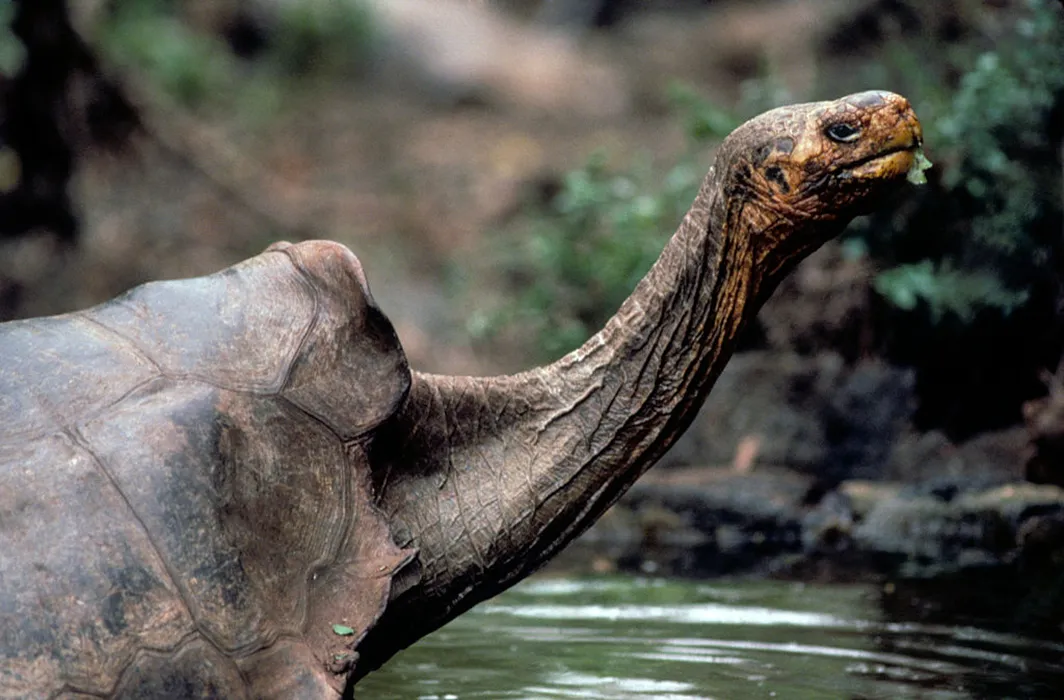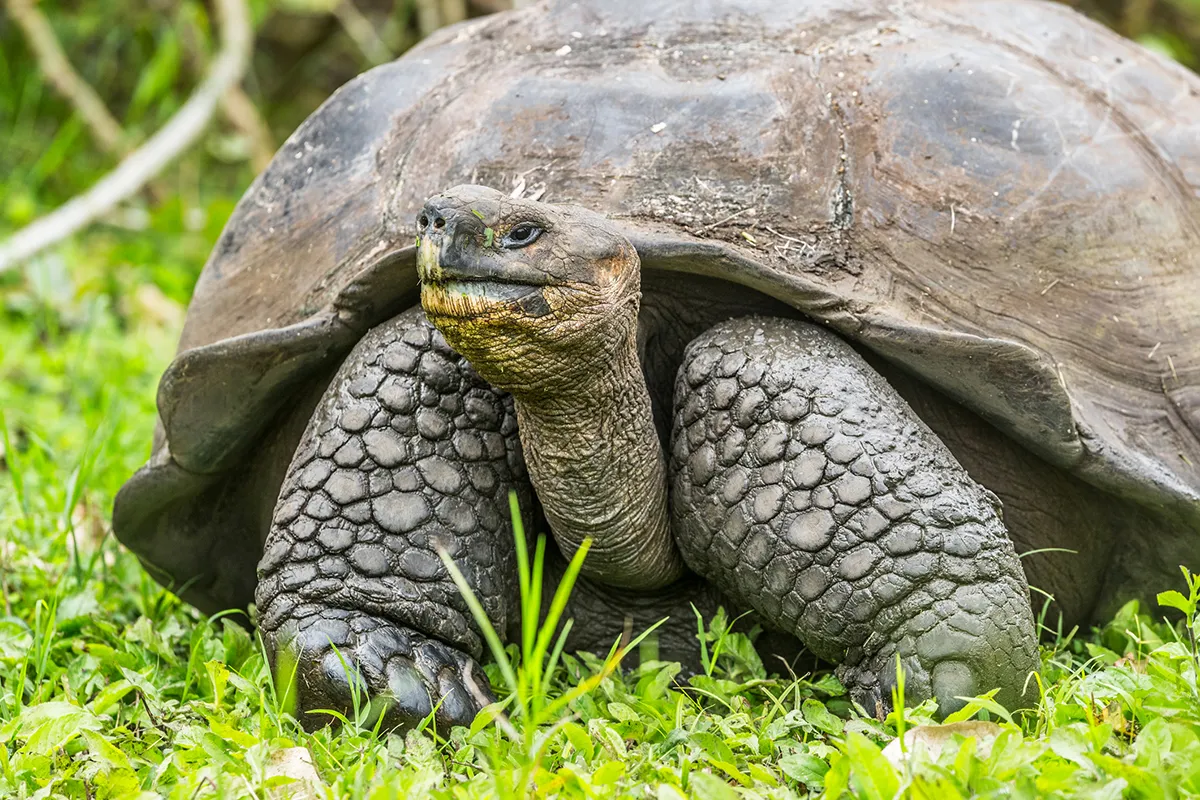What are Galáagos giant tortoises?
The Galapágos giant tortoise is the largest species of tortoise alive today
Where do Galáagos giant tortoises live?
The most famous resident of the Galápagos Islands is the Galápagos giant tortoise which can live for over 100 years. The name 'Galápagos' even comes from the old Spanish word for tortoises.
The Santa Cruz highlands and Alcedo Volcano on Isabela have the largest populations of giant tortoises. Populations can also be found on Santiago, San Cristobal, Pinzon, and Espanola.
This giant tortoise spends an average of 16 hours a day basking in the sun, resting and grazing, playing an important role in seed dispersal. They also have a symbiotic relationship with small birds on the islands which can be seen sitting on the back of tortoises, picking out the ticks in their shells and skin folds.
How big are Galáagos giant tortoises?
The Galápagos giant tortoise can grow up to 1.8m but are on average 1.5m. Galápagos giant tortoises show large variation in size and shape but all 15 species can be classed into two main shell types: domed and saddle-backed. Saddle-backed tortoises have an upward curve to the front of their shell, allowing them to stretch up to reach higher growing plants, while dome-shelled tortoises lack this upward angle.
What do Galápagos giant tortoise eat?
Galápagos giant tortoises eat a variety of vegetation including grasses, fruits and cactus pads, however they can survive for up to a year without water or food.
How many species of Galapágos giant tortoise are there?
There are 12 extant species of giant tortoises in the Galápagos Islands, all belonging to the Chelonoidis genus:
- Española giant tortoise, C. hoodensis
- Wolf volcano giant tortoise, C. becki
- Western Santa Cruz giant tortoise, C. porteri
- Volcán Darwin giant tortoise, C. microphyes
- Eastern Santa Cruz giant tortoise, C. donfaustoi
- Sierra Negra giant tortoise, C. guntheri
- San Cristóbal giant tortoise, C. chathamensis
- Pinzón giant tortoise, C. duncanensis
- Santiago giant tortoise, C. darwini
- Fernandina giant tortoise, C. phantasticus
- Cerro Azul giant tortoise, C. vicina
- Volcán Alcedo giant tortoise, C. vandenburghi
How long do Galápagos giant tortoises live?
The Galápagos giant tortoise have an average life span of over 100 years.
Are Galapágos giant tortoise endangered?
At least three species of giant tortoise are thought to have gone extinct – including the Pinta tortoise, whose last known survivor (Lonesome George) passed away in June 2012.

Of the 12 different species of Galápagos giant tortoises alive today, six are Critically Endangered, three are Endangered and three are Vulnerable, according to the IUCN Red List.
Why are Galápagos giant tortoises endangered?
Historically 100,000 – 200,000 tortoises were lost to exploitation by whalers, pirates and fur sealers who ate tortoises and used their oil for burning in lamps.
The introduction of several species by humans, such as rats, pigs, feral dogs, cattle and goats has had further devastating effects on tortoise populations; attacking tortoises; damaging nests and competing with tortoises for food. There are possible health issues from being in close proximity with livestock. Barriers to the migration routes such as farmland fencing and roads also affect Galápagos giant tortoises.
How many Galápagos giant tortoises are left in the world?
12 living species of giant tortoises remain in Galápagos and their population is currently estimated at 20,000 individuals.

The Galapagos Conservation Trust is the only UK charity to focus exclusively on the conservation and sustainability of the Galápagos Islands.
Find out more about the Galápagos sea lion on the Galapagaos Conservation Trust website.
Main image: Giant Tortoise at tortoise Rancho El Chato, Santa Cruz. © Jennifer Linton

